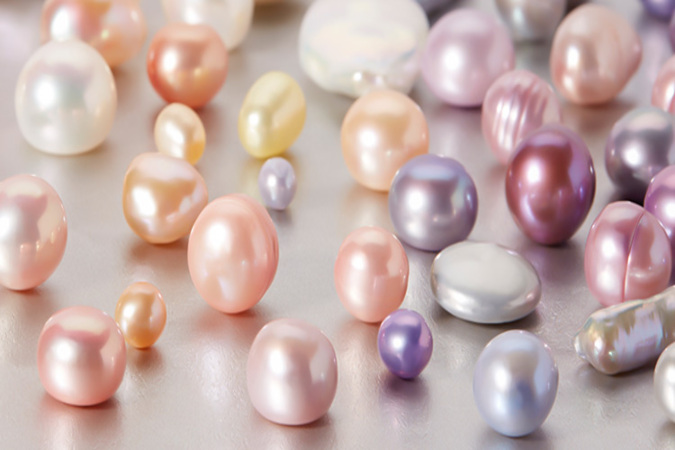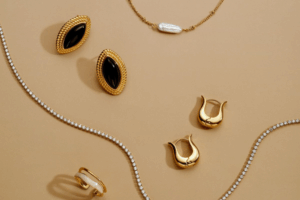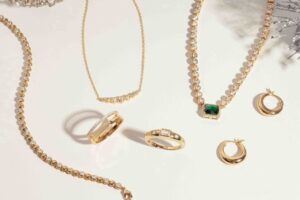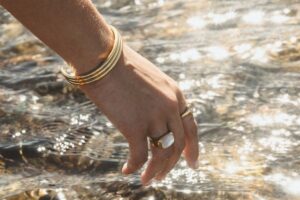Pearls are gemstones that exhibit numerous iridescent color shades. While the most common color is white, several other shades with lustrous overtones can as well be used for jewelry making. Pearl jewelry prices range from a few hundred dollars to several thousands and their value can be estimated through the rarity of their color.
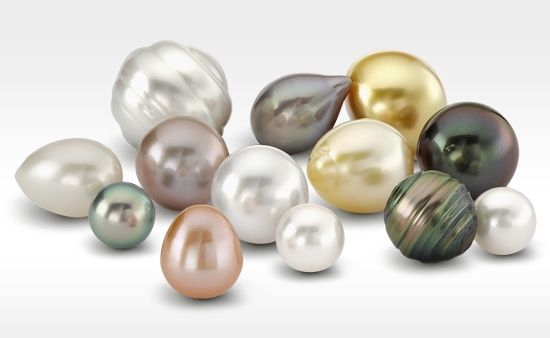
Source: Pinterest
This guide contains some of the most expensive pearl colors, their prices, and the major factors responsible for their distinctive colors.
What Color of Pearl Is the Most Expensive?
Generally, the most expensive and valuable pearl colors are gold and black. Now, where do the most expensive pearls come from? Golden pearls are often products of South Sea pearls while black pearls are of the Tahitian pearl variety. Below are 6 of the most expensive pearl colors and their features:
1. Golden Pearl
This is a saltwater pearl majorly found in the Philippines. Golden South Sea pearl is one of the biggest pearl sizes produced in the shell of a Pinctada Maxima and it possesses thick nacre layers that display captivating hues such as yellow or champagne.
The pearl price falls between $200-$1500, making it one of the most expensive pearls. It is very valuable because of its large size and also because it requires a longer duration to fully form within its mollusk (2-4 years).
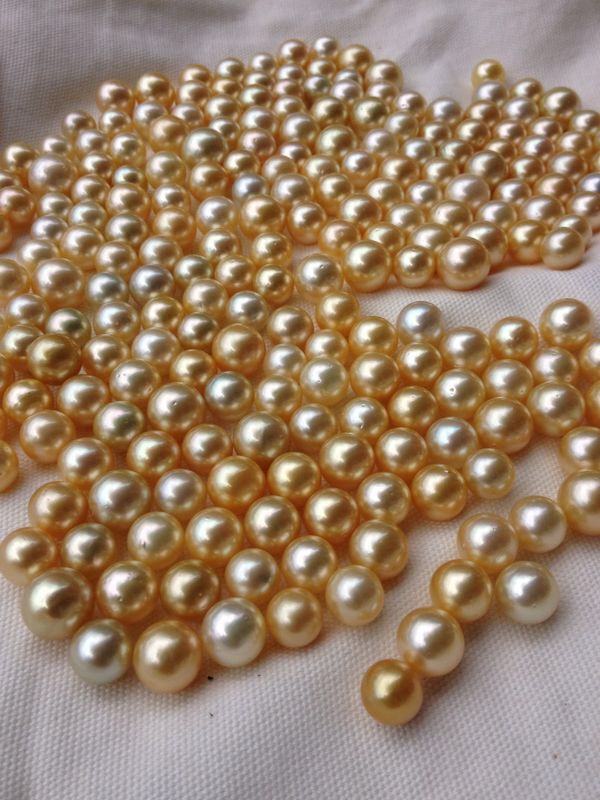
Source: Pinterest
2. White Pearl
White is the most common color for cheap pearls, however, the South Sea variety stands out totally. While they are cultured in The Philippines and Indonesia, they possess unique shapes and structural rose overtones that set them apart from conventional white pearls.
The price of white pearl jewelry falls between $200-$1,500, and this is a result of its rarity and the uniform colorful display it introduces to any outfit.
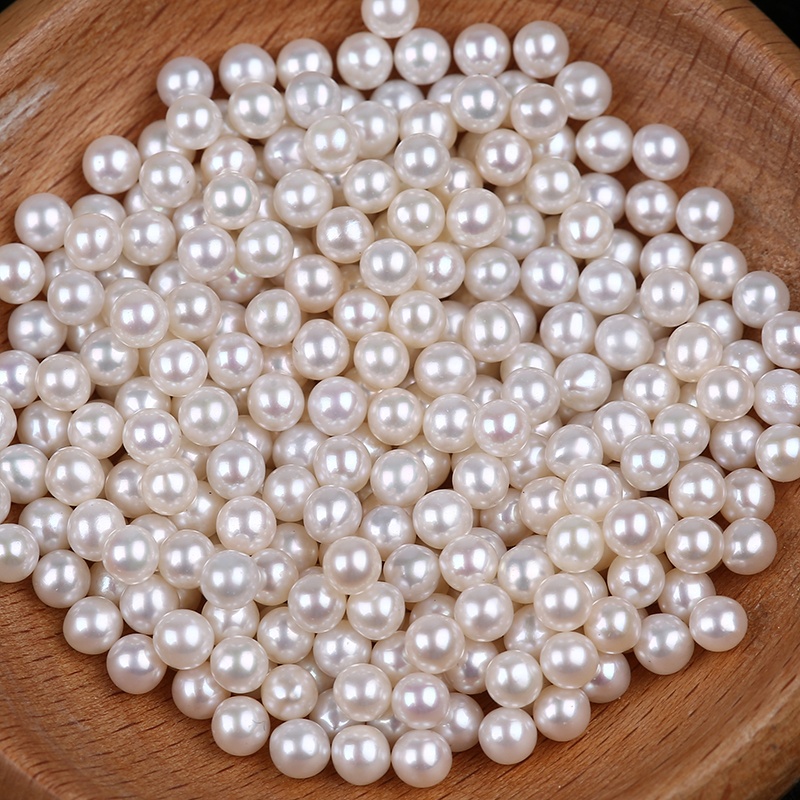
Source: Pinterest
3. Peacock Pearl
Just like the feathers of a peacock, this pearl exhibits a myriad of lustrous natural colors. Peacock pearl color is a class of Tahitian pearl cultured in French Polynesia. Its body color is usually dark grey-green with pink, purple or gold overtones that become visible when light reflects on its surface.
This pearl color sits between $200 and $1200 because it is formed by unique pigments and trace elements that can only be found in certain parts of the South Sea.
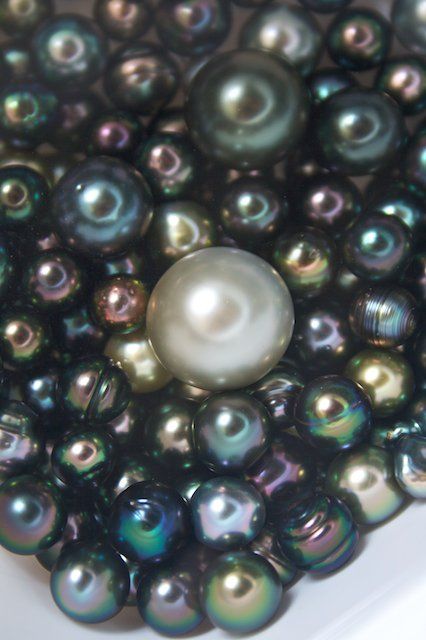
Source: Pinterest
4. Blue Pearl
This is another rare pearl color famously known to be a type of Tahitian pearl. It exudes eccentric ethereal hues that make its surface display the look of an ocean. Its color shades include sky blue, silver blue, navy blue, and deep cobalt.
Blue pearls are so rare because it’s nearly impossible to replicate the exact condition that influences their color. Blue pearls price around $200-$1,000 and they can be purchased from a sustainable jewelry manufacturer.
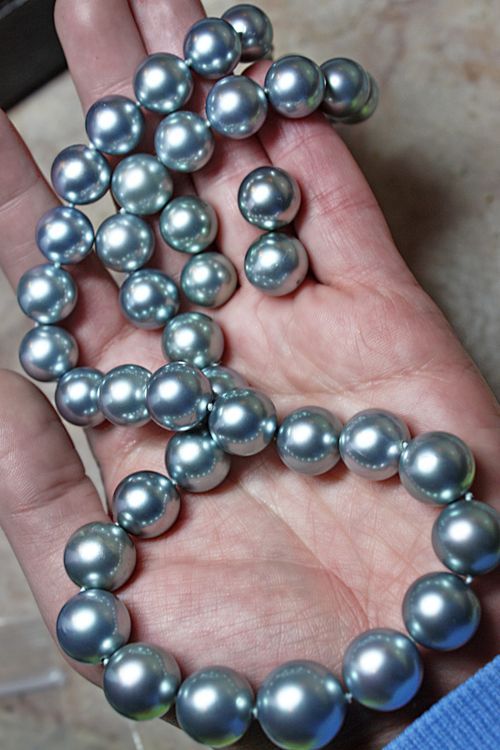
Source: Pinterest
5. Black Pearl
Natural black pearls are known to be a type of Tahitian pearl. Their nacre layers accommodate overtones that display light silver or dove grey hues, depending on interaction of light with nacre thickness and structure.
A lot of black pearls on the market are usually dyed such as Akoya and freshwater, however, the rare ones of Tahitian pearls formed in French Polynesia do retain their natural color.
Are black pearls expensive? How much are black pearls worth? Well, natural black pearls are expensive. Black pearls prices fall between $100-$800 because they take almost 2 years to form within their mollusk.
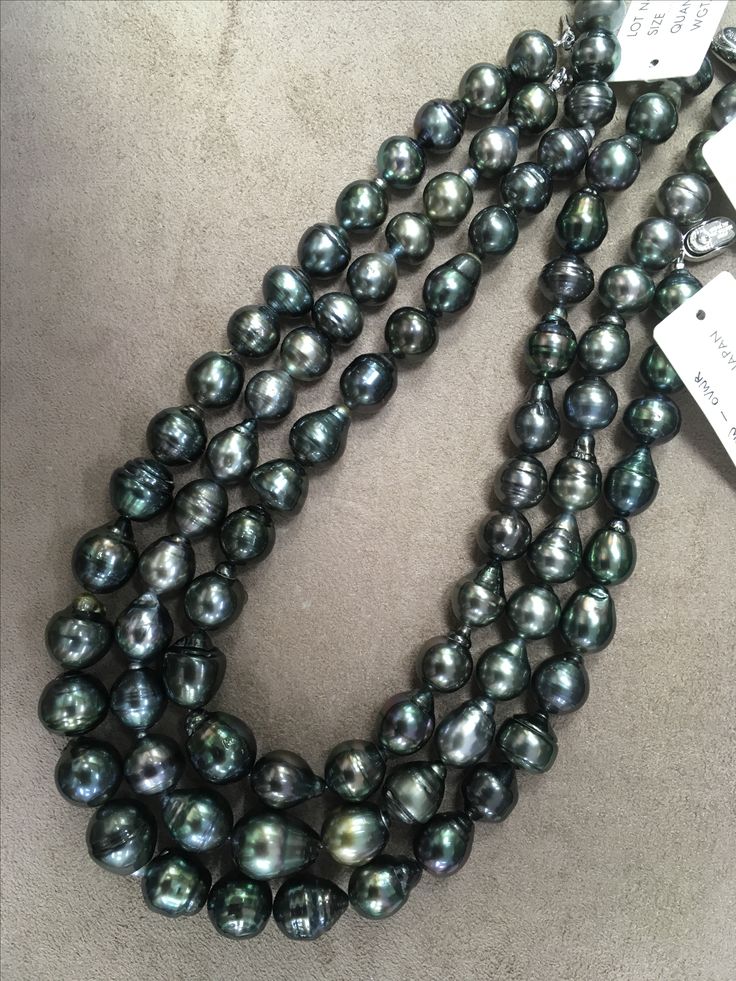
Source: Pinterest
6. Pink Pearl
Pink pearl is a freshwater pestel color that hardly fades. It is widely known to be round and shiny, with captivating overtones like rose, gold, aquamarine, and silver. This lustrous gem originates from China and it is an Akoya pearl variety.
A reason behind the expensive pink pearls price is that only a small amount of harvested pearls meet the quality standard required for jewelry making. Now, how much does a pink pearl cost? The price is around $100 to $300.
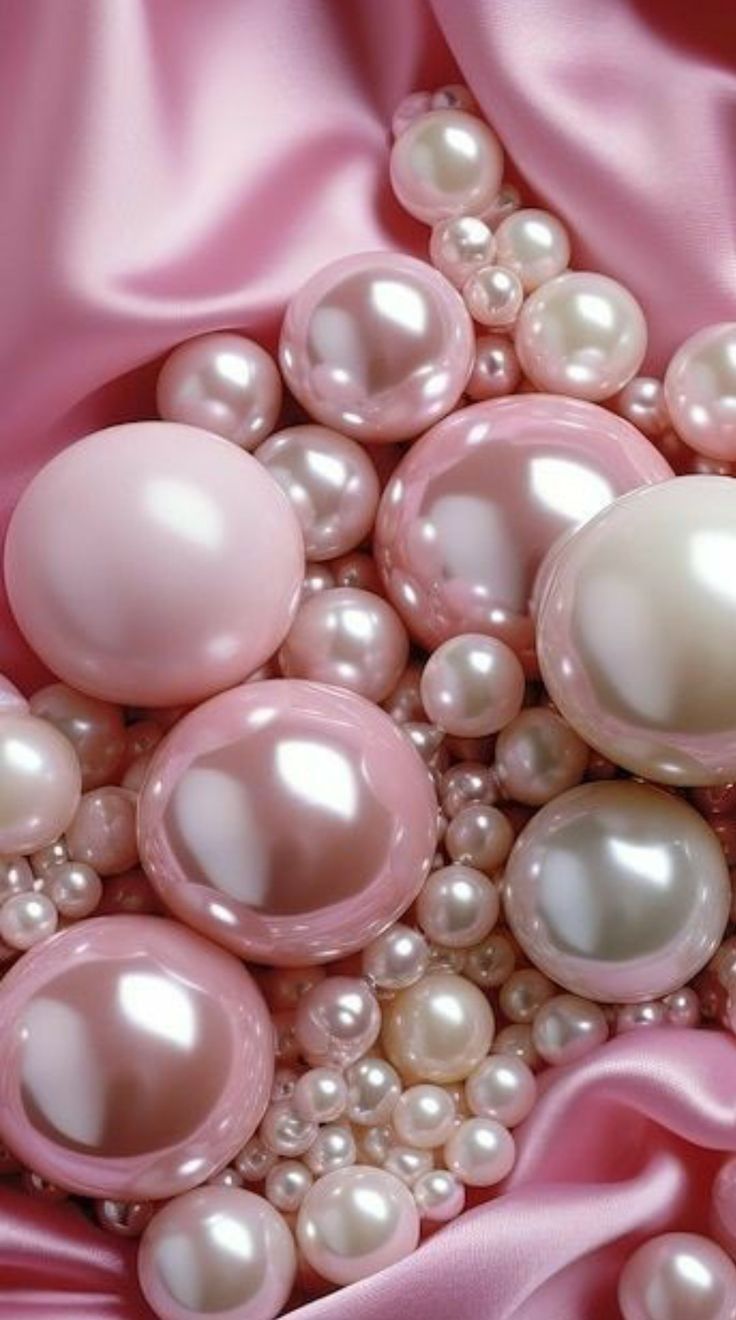
Source: Pinterest
Most Valuable Pearl Color: Pearl Price Chart
How much does one real pearl cost? Below is a table that contains some of the top rated pearl grades and prices:
| No. | Pearl Color | Price Range | Pearl Type |
| 1 | Golden Pearl | $200 – $1500 | South Sea Pearl |
| 2 | White Pearl | $200 – $1500 | South Sea Pearl |
| 3 | Peacock Pearl | $200 – $1200 | Tahitian Pearl |
| 4 | Blue Pearl | $200 – $1000 | Tahitian Pearl |
| 5 | Black Pearl | $100 – $800 | Tahitian Pearl |
| 6 | Pink Pearl | $100 – $300 | Akoya Pearl |
Tip: In addition to pearl price, if you’re curious gemstone prices, you can also explore the most valuable birthstones in order – from the most to least expensive, which gives a broader view of rarity and market value across gemstones.
What Color Pearl Is the Rarest? Pearl Color Rarity Chart
Naturally colored blue pearls are the rarest pearl colors in the world. Other colors that are rare to find are black, pink, light blue, and lavender. Explained below are the top 5 rarest pearl colors:
| Pearl Color | Typical Source | Why Rare |
| Blue Pearls | Akoya, South Sea, Tahitian | Naturally blue tones occur very rarely. |
| Black Pearls | Tahitian (black-lipped oyster) | Found only in limited regions. |
| Pink Pearls | Freshwater | Strong natural pink is uncommon. |
| Light Blue Pearls | South Sea, Akoya | Soft blue shades are rarely produced. |
| Lavender Pearls | Freshwater (Edison) | Natural lavender hues are scarce. |
What Is the Most Common Pearl Color?
White is the most common, popular, and best pearl color. It blends in with virtually any outfit and it is often associated with weddings and graduation celebrations. White pearls are considered as a symbol of purity, innocence, peace, and tranquillity.
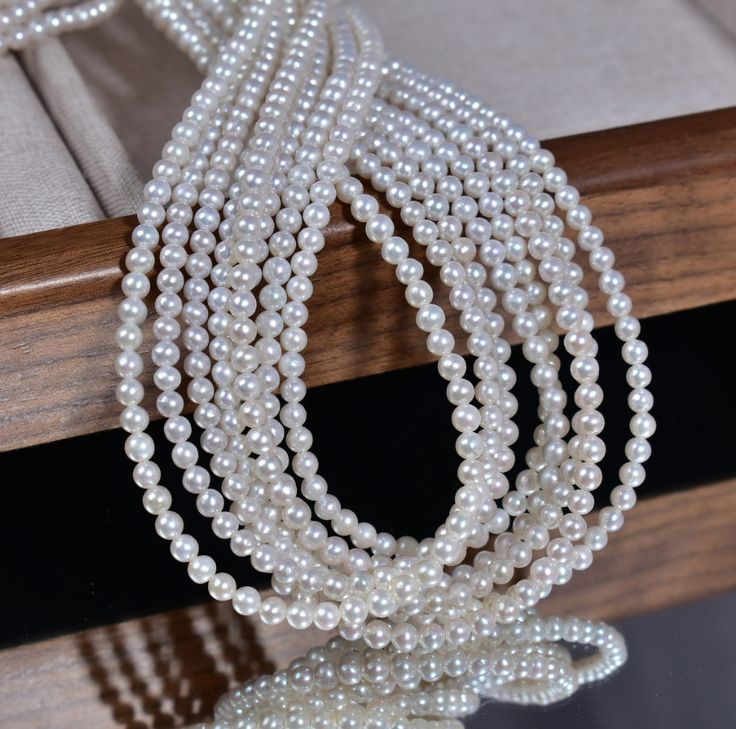
Source: Pinterest
How Pearl Color Impacts Price?
The properties that a pearl color exhibits can directly or indirectly influence its price. Explained below is how pearl color impact the prices:
Popularity & Rarity
Classic and timeless pearls are highly sought after, making them consistently valuable. Rare pearl colors are expensive because they are hard to find, produce, and meet market demands.
Pearl Body Color
The body color of a pearl refers to the dominant visible color on its surface, and this is influenced by its mollusk type, mantle tissue, and environmental condition. Real pearl price is greatly influenced by the class of color it displays, hence why a gold pearl price is higher than a purple pearl price, green pearl price and yellow pearl price.
Pearl Overtone
Overtone refers to the subtle colors present on the pearl’s main body color. They are in the form of translucent hues that become visible when light reflects on the pearl’s surface. While pearls with complex overtones like rose usually carry a higher value than regular green overtones, those with combinations of overtones are still the most valued.
Pearl Orient
Orient is a floating rainbow-like sheen present within a pearl. When a pearl resists the entrance of light, it breaks down all color components to create more visibility for its orient, increasing the reflection.
What Colors Do Pearls Come Naturally?
Pearls can come in different natural colors and overtones. Here are some natural colors for different types of pearls:
- Freshwater Pearl: White, pink/cream, purple, with overtones of rose, silver, and cream.
- Akoya Pearl: White, cream, yellow, and gray, with overtones of rose, silver, gold and cream.
- South Sea Pearl: Golden, yellow, white, and silver colors, with overtones of pink, cream or silver.
- Tahitian Pearl: Dark and exotic colors like aubergine, blue, green, grey, black, with overtones of blue, brown and pink.
Note: Freshwater pearls, Akoya pearls, South Sea pearls, and Tahitian pearls are all cultured pearls. The differences between natural pearls and cultured pearl is that a natural pearl develops within a mollusk on its own while cultured pearls are a product of human intervention.
Are Colored Pearls Always Natural?
While some pearls achieve their stunning colors naturally, some are treated or dyed to create a wider range of hues appealing to a diverse range of tastes.
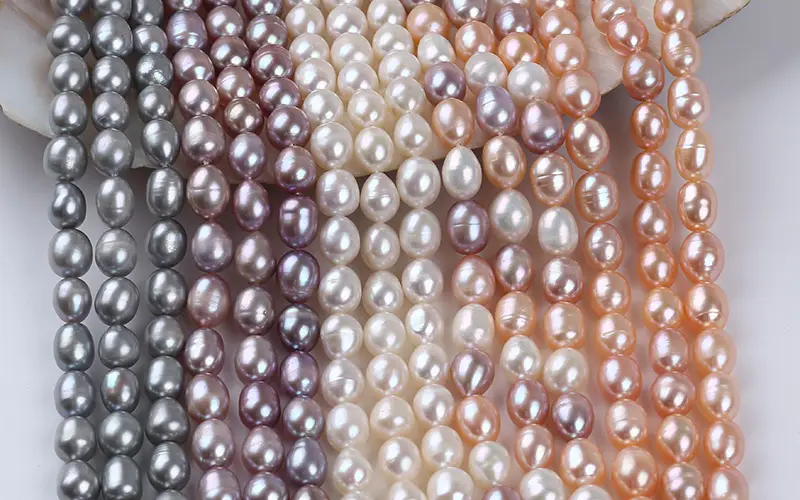
What Makes Pearls Different Colors?
The differences in the color formation of pearls are influenced by factors like:
- Mollusk Type
A mollusk is a soft-bodied aquatic animal responsible for producing pearls. Pearls form within the soft tissue of a mollusk when an external irritant is introduced. The distinctive palette of a pearl’s color is predominantly formed to carry the hues present on the mollusk’s lip. For example, the black Tahitian pearl whose color is directly influenced by the black-lipped oyster, as well as South Sea oysters that produce white or golden pearls.
- Nacre Thickness
Nacre is the substance secreted by a mollusk to encase an irritant until a pearl is formed. This substance plays a very important role in determining a pearl’s iridescence. The thicker the nacre, the thicker and deeper the color of the pearl.
- Environment
A pearl’s color emanates from its selective absorption of light, which is facilitated by pigments and trace metallic elements present within its environment. Other environmental factors that influence its color are water quality, temperature, and the mollusk’s diet.
- Overtone
Overtones are secondary colors that may appear on a pearl’s surface. They often appear naturally on pearls with longer cultivation duration and those with access to a definite intensity and duration of light penetration. The presence of overtones creates subtle hues that add depth to a pearl body color, hence a variation in its overall appearance.
- Treatments
Not all mollusks are capable of producing pearls. The few that produce pearls do not form colorful types suitable for making jewelry. Therefore, some producers resort to pearl treatments such as dyeing, bleaching, or irradiation to achieve the specific color they desire.
Why Are Pearls So Expensive?
The main factor behind the high cost of pearls is rarity. Naturally formed pearls are not easy to come by. Apart from the fact that they take several years to mature, most of them do not produce jewelry-worthy pearls.
How Much Are Pearls Worth?
Below are the various factors that affect the value of pearls:
Size
Generally, pearl sizes do range between 1mm-20mm. Shell pearls vs freshwater pearls are widely known to be of smaller sizes, which is why they are cheaper. Tahitian and South Sea pearls, on the other hand, are more costly due to their large size.
However, the size of a pearl isn’t a definite yardstick for pearl valuation. Larger pearls with poor quality might be cheaper than smaller pearls with better quality.
Shape
Pearls are available in different shapes like oval, round, button, drop, circle, and baroque. Round pearls are the most sought after and they are considered the most valued shape due to the cultivation process involved.
Other symmetrical shapes like oval, teardrop, button, and circle are mostly valued as regards to their quality. The most expensive pearl shape is baroque and this is due to its indefinite and unique structure.
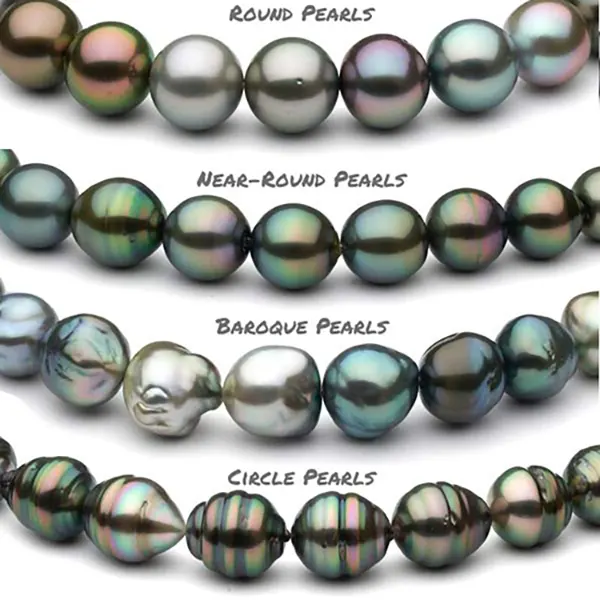
Luster
A pearl with good luster reflects light through its nacre layers. The quality of its luster can be used to determine how properly aligned the nacre layers are. Furthermore, pearls with good nacre layers often hold more value than pearls without good layers.
One way to test a pearl’s luster is to check if you can see your reflection on its surface. Pearls with great luster are more expensive.
Colors
Pearls come in diverse colors and hues. While some are naturally formed, other pearls undergo certain treatment processes to achieve the desired colors. Pearls with natural colors are more valuable because they possess unique color formations that cannot be gotten artificially.
Another thing people look out for in a pearl is its overtone. A pearl with visible overtones is more costly than plain pearls.
Surface Quality
A real pearl’s surface is gritty because it contains tiny crystalline materials that create blemishes like cracks, gaps, chips, and patterns on its surface.
A pearl with excess blemish is exposed to damage in the long run. The less blemish on a pearl’s surface the more expensive it is.
Nacre Quality
The quality of a pearl’s nacre determines its overall beauty because it is a material that makes up the whole body of a pearl.
Nacre is secreted by a mollusk in layers around an irritant until a pearl is formed, and the quality is influenced by the amount of time it spends developing in its mollusk. A pearl is expensive when it possesses thick and smooth nacre layers that complement its color.
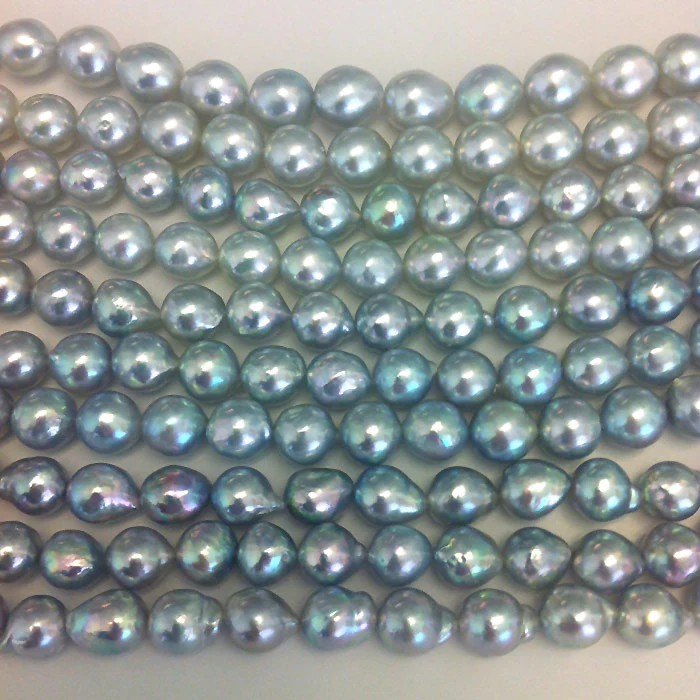
Things to Consider When Choosing Pearl Colors For Your Jewelry Line
The color selections you choose for your jewelry line can influence the amount of turnover your business will get. The tips below will help you make an informed decision on the best colors to choose.
Consider Your Target Market
Understanding your target market will give room for necessary adjustments. For the high-end market, consider South Sea pearls (gold, yellow, or white) and Tahitian pearls (black, blue, or green). For the middle-end market, consider Akoya pearls (cream, yellow, or grey). For the fashion market, go for freshwater pearls (purple, pink, or green) or more affordable options like shell pearls.
Understand Customer Preferences
Discover the preferences of your target demographic: Young adults may prefer the trendy and vibrant look of pink or lavender pearls. Luxury buyers are often drawn to golden or black South Sea pearls for their high-end appeal, while Bridal jewelry often lean towards white or ivory pearls for classic and romantic pieces.
Balancing Luxury and Affordability
While rare and popular pearl colors are enchanting and alluring, they can be quite expensive. It is advisable to use a small number of pearls as adornments to reduce budget, or consider alternative pearl types if they have the same pearl color.
Key Takeaway
The most valuable pearl colors are either South Sea or Tahitian pearl types. Their rarity and uniqueness make them blend into both high-end and middle-end apparel, creating a potential market that your brand can tap into.
FAQs
Yes, natural black pearls—especially Tahitian pearls—are generally considered quite valuable. Their rarity, deep hues, and complex cultivation make them valuable. Freshwater black pearls are more accessible and more affordable.
Prices vary depending on type and quality. Most black pearls range from $100–$800. Cultured freshwater or dyed pearls can start from $50, while Tahitian cultured pearls typically range from $200 to $2,000.
Yes! Natural black pearls are real. The most well-known type of black pearl is Tahitian pearls, which are known for their natural, untreated, dark body color. Today, most black pearls on the market are cultured, but are still beautiful and available at an affordable price.
Yes, natural black pearls are extremely rare due to the specific conditions needed for their formation. Cultured black pearls are more available but still less common than typical freshwater or Akoya pearls.
